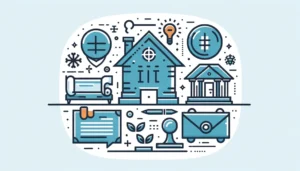
Love, Loss, and Money: The Shocking Financial Aftermath of a FI Spouse’s Death | Amy | Ep 476
In this episode: what follows tragedy, the importance of wills and beneficiaries, intestate succession, and probate.
Reaching financial independence doesn’t require great sacrifice, but it does mean that you’ll need to be more intentional with the financial choices you make. Once you’ve changed your spending habits, such as eating at home more, ridding yourself of expensive car payments, and reducing your housing costs, optimize spending on the Big 3. Continue to grow the gap between spending and income through that optimization.

In this episode: what follows tragedy, the importance of wills and beneficiaries, intestate succession, and probate.

This Ultimate Guide to Debt will teach you everything – from the types of debt, which ones are the most toxic, to how to knock them all out.

This is an ultimate guide to banking basics to help you learn the fundamentals of banking, budgeting, spending, and saving on your path to financial independence.

Credit 101: The Ultimate Guide to Credit will teach you what you need to know about what credit is, what it can do, how to use it, and how to build it.

When you get down to it, there are two ways to accumulate more wealth. One is by spending less money and the other is by

I grew up on Long Island (so, in the NYC metro area). I was one of nine children. My parents were a professor (i.e., not
The definition of optimization is making the best or most effective use of a situation or resource. While the term optimization is most often used in the context of making small improvements, occasionally, the most efficient use of your money might come from making dramatic changes.
Your food budget is one of the easier line items to track and scrutinize with a critical eye. If you are already on the path to FI, then more than likely you’re already aware that one of the biggest budget busters is eating away from home. The same meal that might cost $15 to $20 at a restaurant can be made at home for a fraction of that cost. But once eating a high percentage of your meals at home, what are some additional ways to optimize spending on the Big 3 with respect to grocery budget?
When most people set a goal for themselves, it’s usually more than crossing their fingers and hoping for the best. Effective goal setting requires the development of a plan to achieve it. Tracking progress toward a goal reinforces behaviors and promotes a sense of accomplishment.
Setting a goal for your food budget can drive positive results. If you’re unsure what a good goal might be, start with a goal to cut your current costs by 10%. Reassess at the end of the month. If that was easy, try cutting back another 10%. Or shoot for the goal used by many in the FI community of $2 per person per meal per day. That’s $180 a month for singles, $360 for a couple, or $720 for a family of four.
It doesn’t sound like much, especially when compared to the cost of eating out, however, the $2 threshold is achievable with a little effort and intention. Keep in mind the $2 goal is an average and shared across servings. A recipe may cost $12 to prepare, but if you can get 6 servings out of hit, your goal has been hit!
Related: Check out the Barrett Family Cookbook
Meal planning is not only a FI’s secret weapon to keeping food costs down, but already knowing what you’re going to cook makes a busy or stressful week so much easier. But once you get started with meal planning, in addition to helping to optimize spending on the Big 3, you’ll discover there are several benefits.
Yes, cooking at home requires some time and effort, but when meals have been planned out in advance, it’s a real time saver. That starts with shopping. Going to the grocery is a chore. Who hasn’t decided to make something only to find midway through preparation that they were missing one or two critical ingredients? With a weekly meal plan, you can eliminate multiple shopping trips and pare it down to just once every week or two.
Without a meal plan, a trip to the grocery store is a bit of an aimless endeavor. Replenishing household staples is straightforward enough, but everything else filling your cart might be things you like, but have no real plan for, or worse, impulse purchases. Meal planning allows you to shop with a list of only the things you need.
It’s sad to read about how much food goes to waste in America. The average family throws away $1,600 worth of produce each year. Don’t throw your money in the garbage. Good intentions to eat healthily are admirable, but without a plan for using that spinach you bought, there’s a good chance it will go bad before you remember to use it.
A recent study published in the journal Public Health Nutrition concluded that eating out leads to more calories consumed and a lower intake of nutrient-dense foods. Meal planning puts you in the driver’s seat. When you have a plan, not only are you far less likely to take the easy route and eat out, but you’re more motivated to plan for and prepare meals that meet your healthy eating goals.
Getting started with meal planning or batch cooking freezer meals can be intimidating. Start small and get your feet wet planning a handful of meals you and your family already love. Slowly try new recipes and build up your catalog favorites from there.
If you need extra support to get started, there are tons of online resources to help with meal planning, some incorporate the $2 person cost goal into their plans. For a small fee, they send a week’s worth of recipes, including a shopping list of everything you’ll need.
Sometimes your time is worth more than what it costs to have someone else do the work for you. However when it comes to trying to optimize spending on the Big 3, convenience buying deserves examination. Relying on convenience items too much can be a real drain on your finances.
The grocery store is filled with these conveniences and it’s often quite tempting to give in to them. For example, a bag of pre-washed lettuce, oven-ready meals, and a microwavable cup of macaroni and cheese are all super easy but cost so much more than starting from scratch.
The next time you’re tempted to grab that bag of shredded cheese, compare it to a block you can shred yourself. Or rather than picking up a bottle of vinaigrette, can you make it at home using what you already have? Chances are your homemade version is going to taste better and can be made for less using better quality ingredients.
America has a love affair with cars, especially the big, expensive gas-guzzling kind. While not the most economical of vehicle choices, FI is flexible. The easiest way to optimize spending on the Big 3 for transportation is that if you need a vehicle, consider buying a gently used version well after its value has depreciated. Or if you buy new, plan on driving it for 15 years or more.
Whichever choice you make, it’s important to understand the impact that decision has on your finances over time. The true cost of car ownership can result in many hundreds of thousands of dollars lost over an adult life if you always carry a car payment. Making that monthly payment decreases your gap, causing you to invest less, and miss out on the miracle of compounding interest.
While the FI community is squarely behind the advantage of buying used and driving one vehicle for 10, 15 years, or more, what are some additional ways to optimize your transpiration expenses?
Listen: The True Cost of Car Ownership
Related: Longest Lasting Cars on the Road Today
Owning one car for every adult in a household is quickly becoming passé. With so many people working from home these days, the extra cost of being a two-car household might not be worth it. If a car is no longer necessary for commuting to and from work, consider whether or not you can get by without one.
Think you need a car for running errands? Even secondary reasons for owning a car like grocery shopping are becoming less and less significant in today’s society. With the huge variety of products available online with speedy shipping and app-based ride-sharing and delivery services, what do you really need to own a car for that can’t wait or be met some other way? Even after paying for services, fees, and tips, it might be less than owning a second car.
AAA has tracked vehicle ownership costs for decades. In their 2016 calculation of owning and operation costs, they determined individual monthly driving costs were:
It’s a total of $608 a month!
Doing something a little bit outside of the norm, like becoming a one-
car or no-car household, might just be more practical and financially savvy than you think.
Getting from place to place doesn’t have to mean driving a car. Many alternatives cost less.
The availability and quality of public transportation vary from city to city, but giving your city’s transportation options is worth exploring. Commuting by train, trolley, or bus can take much of the stress out of your day. Relax with a cup of coffee and read or listen to a podcast while someone else does the driving.
And don’t forget to check with your workplace. For decades, companies, governments, and non-profits have tested out a variety of ways to encourage employees to use public transportation. Some offer a monthly stipend just to use it instead of your car. That’s free money!
Carpooling has been around as an alternative to private vehicles for a long time. A similar program that might be available in your area is a vanpool. Unlike carpools that use personal vehicles, a vanpool uses a van or SUV with a lease paid for by the riders. Riders’ costs can sometimes be offset by company, city, or county programs or subsidies. And many will even help you find a vanpool to join.
A car isn’t the only way to get from place to place. Consider riding a bike or even using your own two feet. Not only is riding a bike or walking easy on your wallet, but it’s also great for your health.
In the US, a national bike to work day is a community organized event usually held each May. It’s a great time to get tips and find a local bike-to-work community.
Almost every state in the US requires drivers to carry auto insurance. This is not an area you can afford to skip, but when it comes time to renew your policy, be sure to shop around and verify you’re paying the best rate available you can get.
But it’s not a bargain if you aren’t quoted for the same coverage. The amount of coverage for comprehensive, collision, liability, etc. should be identical to make an accurate comparison. An easy and time-saving way to get multiple quotes quickly is to use an insurance aggregator, like PolicyGenius.
Related: How to Shop for Car Insurance
Fuel is another high-dollar line item for car owners. If you have a roof-top solar system, or if electricity costs are low in your area, consider going electric. Besides being better for the environment, electric cars may have special tax credits, are often less expensive to maintain, and may just get you access to special less congested highway lanes.
Housing is one budget area some members of the FI community have taken to new and ingenious levels. Those who want to optimize spending on the Big 3, know the biggest bang for their buck comes from housing.
The definition of arbitrage is taking advantage of price differences between two or more markets. Therefore, geographic arbitrage specifically refers to taking advantage of the price differences between geographic locations. In the FI community, this practice is referred to simply as geoarbitrage.
Picking up and moving your life may not be on the table right now, but the idea of domestic geoarbitrage is a good concept to have in your back pocket for when you can. This time may come when you are searching for new employment, have the ability to work remotely, or when you become financially independent or retire.
Moving to a low cost-of-living region of the country can help to boost the savings rate for people still on the path to FI through lower housing costs, and possibly even lower taxes. While those who have already reached FI can stretch their savings and do more while withdrawing less.
Read: Top 10 Best Cities for Financial Independence
For the truly adventurous, international geoarbitrage is an attractive cost-saving option. According to WorldData, the US ranks at 21 for its cost of living and purchasing power. 80 other countries are less expensive to live in, many with active and thriving US ex-pat communities. This one move can help optimize spending on the Big 3 and much more.
In addition to the housing and tax savings that can be had with domestic geoarbitrage, going international can result in another financial benefit. Retiring before reaching medicare age can leave you without health insurance. Affordable health care plans may only cover catastrophic events and even routine medical care in the US to be quite costly. Seeing a doctor, filling a prescription, and even having surgery overseas can be a fraction of what it costs in the States.
Living abroad is a FI friendly approach to immersing yourself in other countries and cultures.
Listen: How to Save Thousands in Taxes Using Geoarbitrage
Of course, not every adventurer enjoys putting down roots. There’s a big wide world out there to explore and they want to experience as much of it as they can. Slow travel allows you to live for an extended time in another place, getting to know the region, local people, food, and culture.
Members of the FI community who pursue slow travel may sell their home in the US or rent it out during their travels, thereby eliminating the issue of paying for an unused house back home while also trying to foot the bill for lodging during their travels.
And some have even been able to reduce or eliminate housing costs by becoming house sitters and finding extended house sits in the locations they want to visit.
Listen: Slow Traveling the World the FI Way With Nomad Numbers
A perennial favorite house hack is getting others to pay your mortgage for you. A multi-unit property where you live in one unit and can rent out the other half or other units for enough to significantly reduce or even bring housing expenses down to zero.
If you own a home with some extra space on the lot, an alternative you might consider is building an accessory dwelling unit, or ADU, if your residential zoning allows. An ADU is a mother-in-law unit or granny flat with a separate entrance, kitchen, and living area.
Incorporating and ADU into your property can increase property and potential resale value, as well as generate long-term rental income or short-term rental income if you list on Airbnb or VRBO.
Listen: House Hacking With Coach Carson
When you begin living with an abundance mindset, having “just enough” can be perfection. The tiny home movement is a social movement where people choose to downsize their living space and simplify life. This movement pairs nicely with FI and achieving financial goals.
These ingeniously designed spaces efficiently use every square inch of space to pack in the amenities of their bigger cousins but in a much smaller footprint. Purchase, maintenance, taxes, etc all end up costing less.
Similar to the tiny home movement, but for those who have the drive to explore is van and RV life. Living in converted vans or RVs, these individuals embrace minimalism and a nomadic lifestyle.
Related: Is a Tiny House the Way to Go? Here’s What to Consider.
The Big 3, food, transportation, and housing, are the big-ticket expenses making up the majority of your spending. Optimize spending on the Big 3 and fast-track your route to reaching FI.
The FI community never ceases to amaze with their creative hacks and unique approaches. Do you have other actions you’ve taken to optimize your Big 3? We’d love to hear them. Share in the comments below!

Our community helps people discover and accelerate their path to Financial Independence with the goal of earning more, spending less, and enjoying the journey.